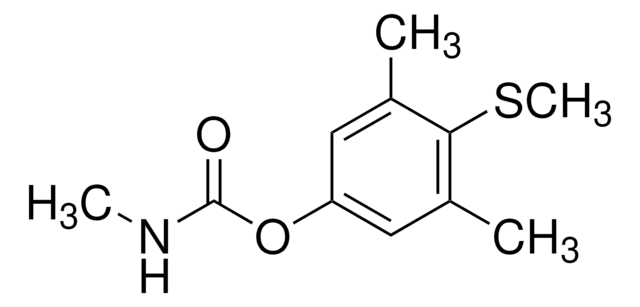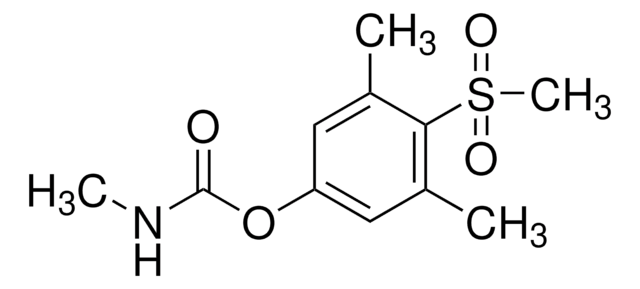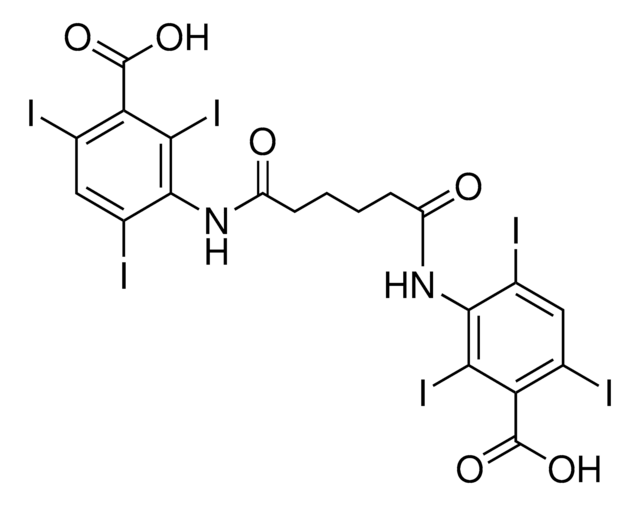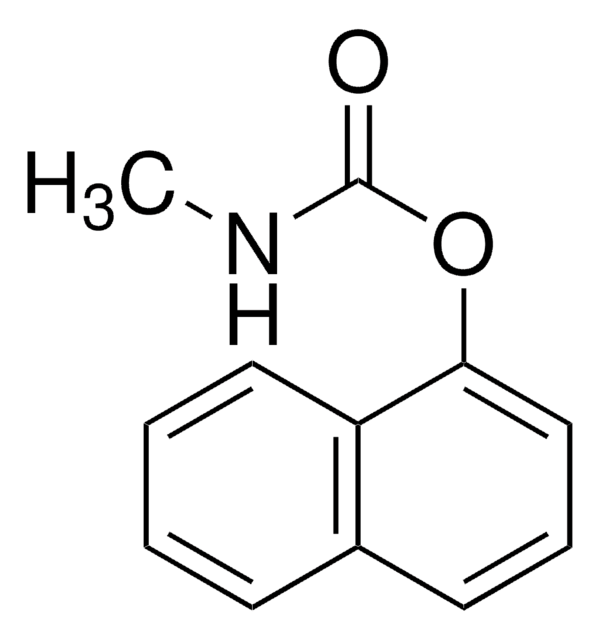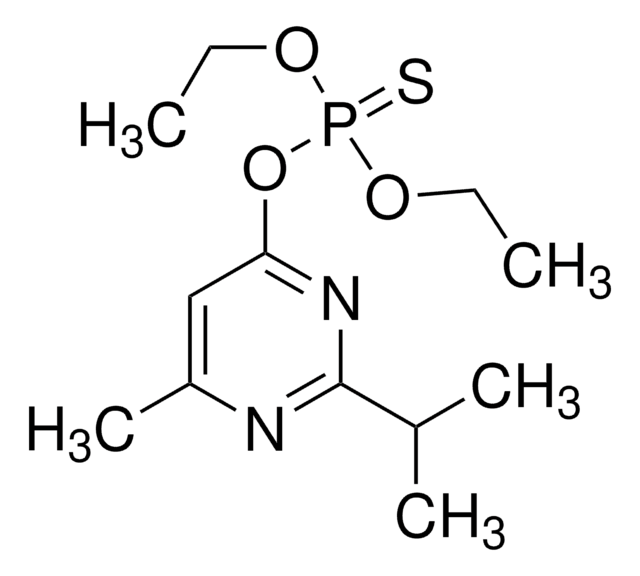31097
1-Naphthol
PESTANAL®, analytical standard
Sinónimos:
α-Naphthol, 1-Hydroxynaphthalene
About This Item
Productos recomendados
grado
analytical standard
Nivel de calidad
densidad de vapor
4.5 (120 °C, vs air)
presión de vapor
1 mmHg ( 94 °C)
Línea del producto
PESTANAL®
Ensayo
≥98.0% (GC)
temp. de autoignición
1007 °F
caducidad
limited shelf life, expiry date on the label
lim. expl.
5 %
técnicas
HPLC: suitable
gas chromatography (GC): suitable
bp
278-280 °C (lit.)
mp
94-96 °C (lit.)
aplicaciones
forensics and toxicology
pharmaceutical (small molecule)
Formato
neat
cadena SMILES
Oc1cccc2ccccc12
InChI
1S/C10H8O/c11-10-7-3-5-8-4-1-2-6-9(8)10/h1-7,11H
Clave InChI
KJCVRFUGPWSIIH-UHFFFAOYSA-N
¿Está buscando productos similares? Visita Guía de comparación de productos
Descripción general
Aplicación
- In human urine by a rapid and automated method based on coupled-column liquid chromatography (LC-LC) with fluorescence detection.
- In canned fruit juices by reversed-phase high performance liquid chromatography with diode-array detection.
Información legal
Palabra de señalización
Danger
Frases de peligro
Consejos de prudencia
Clasificaciones de peligro
Acute Tox. 3 Dermal - Acute Tox. 4 Oral - Aquatic Acute 1 - Aquatic Chronic 3 - Eye Dam. 1 - Skin Irrit. 2 - Skin Sens. 1A - STOT SE 2 Oral - STOT SE 3
Órganos de actuación
Kidney, Respiratory system
Código de clase de almacenamiento
6.1C - Combustible acute toxic Cat.3 / toxic compounds or compounds which causing chronic effects
Clase de riesgo para el agua (WGK)
WGK 1
Punto de inflamabilidad (°F)
257.0 °F - closed cup
Punto de inflamabilidad (°C)
125 °C - closed cup
Equipo de protección personal
dust mask type N95 (US), Eyeshields, Faceshields, Gloves
Elija entre una de las versiones más recientes:
Certificados de análisis (COA)
¿No ve la versión correcta?
Si necesita una versión concreta, puede buscar un certificado específico por el número de lote.
¿Ya tiene este producto?
Encuentre la documentación para los productos que ha comprado recientemente en la Biblioteca de documentos.
Los clientes también vieron
Nuestro equipo de científicos tiene experiencia en todas las áreas de investigación: Ciencias de la vida, Ciencia de los materiales, Síntesis química, Cromatografía, Analítica y muchas otras.
Póngase en contacto con el Servicio técnico
